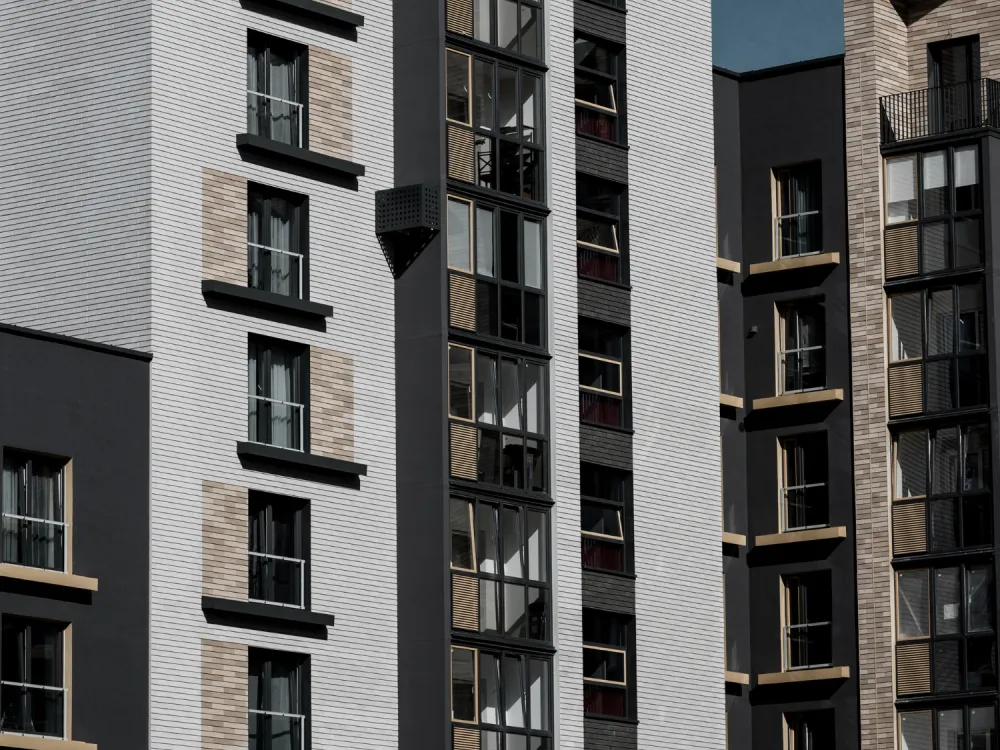
Modern Condominium Building
Merging Luxury with Functionality in Modern Construction
The high-value residential sector in London's commercial construction industry represents a fusion of luxury and practicality, shaping the landscape of modern living spaces. This sector, catering to a niche market, is not merely about erecting structures; it's about creating environments that embody both opulence and functionality. This article delves into how contemporary construction practices are marrying these two elements in the realm of high-value residential projects.
Redefining Luxury in Residential Construction
The concept of luxury in residential construction has undergone a significant transformation. Once defined by extravagance and lavishness, the contemporary interpretation includes functionality, efficiency, and sustainability. This shift addresses the demands of a client base that seeks not only aesthetic excellence but also practicality and environmental consciousness.
Technological Integration and Bespoke Design
A key feature of modern luxury homes is the integration of advanced technology. Smart home systems exemplify this, providing homeowners with control over various aspects of their residence, including climate, lighting, and security. This technology not only enhances comfort and convenience but also elevates the living experience to a futuristic level.
Bespoke design is another hallmark of contemporary high-value residential construction. Moving away from generic solutions, this approach emphasises custom designs that reflect the unique preferences and lifestyles of each client. This personalization requires deep collaboration between architects, designers, and clients, ensuring precision in every aspect of the project.
Embracing Sustainability
Sustainability has emerged as a critical component in luxury residential construction. Eco-friendly materials, energy-efficient designs, and renewable energy integration are increasingly prevalent. Features like green roofs, solar panels, and geothermal systems demonstrate the industry's commitment to environmental stewardship, which is now a vital aspect of luxury.
Challenges in High-Value Residential Construction
Harmonising Aesthetics with Functionality
Achieving a balance between aesthetic appeal and practical functionality is a significant challenge in this sector. Designers and builders must navigate this balance, ensuring that luxury elements complement rather than overshadow the practicality of living spaces. This requires innovative design strategies that integrate opulence with everyday usability.
Regulatory Compliance
In London and other major urban areas, high-value residential construction often involves complex regulatory requirements. Compliance with building codes and planning permissions is crucial, especially in areas with historical significance. These regulations may impose constraints but also inspire creative solutions that align luxury with legal requirements.
Looking At Innovations in High-Value Residential Construction
The future of high-value residential construction is likely to be shaped by ongoing innovations. As client preferences evolve and new technologies emerge, the sector must adapt, continually offering sophisticated and customised living experiences.
In summary, the high-value residential construction sector is a unique intersection of luxury and practicality, driven by technological advancements and a commitment to sustainability. As it continues to evolve, it is poised to redefine luxury living, balancing the desires for exclusivity with the demands for functionality and environmental responsibility. The future of this sector promises to bring forward homes that are not only luxurious but also intelligent, setting new standards in the construction industry.
Global Influences and Local Adaptations
The high-value residential sector in London is not immune to global trends. Influences from architecture and design movements around the world are increasingly evident in London’s luxury constructions. However, what’s noteworthy is how these global trends are adapted to respect and reflect local aesthetics and sensibilities. For instance, the incorporation of minimalist Japanese design elements in London homes, adapted to suit the British taste and climate. Additionally, there’s a growing inclination towards sustainable and smart urban living solutions inspired by Scandinavian designs. This global-local fusion not only enriches the design palette but also ensures that London's high-value residences remain at the forefront of global trends while retaining their distinctive British character.
Outlook for the Future
The high-value residential construction sector in London is a fusion of luxury and functionality, continually evolving to meet the sophisticated demands of its discerning clientele. The sector's current trends and future outlook reveal a dynamic landscape where luxury is no longer defined solely by opulence but also by its integration with practicality, technological innovation, sustainability, and cultural significance.
As we look to the future, it is clear that the high-value residential construction sector in London will continue to set benchmarks for luxury living worldwide. Driven by innovation, a deep understanding of its clientele, and a commitment to blending aesthetics with functionality, this sector is poised to redefine what it means to live in luxury, making it about more than just extravagance — it's about creating a space that is as intelligent and sustainable as it is beautiful. The future of high-value residential construction in London is not just about building homes; it's about crafting lifestyles that resonate with elegance, comfort, and a deep sense of belonging.
Further reading: How to Become a Property Developer in the UK.


